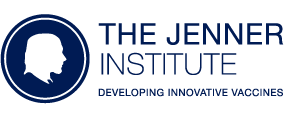Inactivation of human immunodeficiency virus type 1 infectivity with preservation of conformational and functional integrity of virion surface proteins.
Rossio JL., Esser MT., Suryanarayana K., Schneider DK., Bess JW., Vasquez GM., Wiltrout TA., Chertova E., Grimes MK., Sattentau Q., Arthur LO., Henderson LE., Lifson JD.
Whole inactivated viral particles have been successfully used as vaccines for some viruses, but procedures historically used for inactivation can denature virion proteins. Results have been inconsistent, with enhancement of disease rather than protection seen in some notable instances following vaccination. We used the compound 2,2'-dithiodipyridine (aldrithiol-2; AT-2) to covalently modify the essential zinc fingers in the nucleocapsid (NC) protein of human immunodeficiency virus type 1 (HIV-1) or simian immunodeficiency virus (SIV) virions, thereby inactivating infectivity. The inactivated virus was not detectably infectious in vitro (up to 5 log units of inactivation). However, in contrast to virions inactivated by conventional methods such as heat or formalin treatment, viral and host cell-derived proteins on virion surfaces retained conformational and functional integrity. Thus, immunoprecipitation of AT-2-treated virions was comparable to precipitation of matched untreated virus, even when using antibodies to conformational determinants on gp120. AT-2 inactivated virions bound to CD4(+) target cells and mediated virus-induced, CD4-dependent "fusion from without" comparably to native virions. However, viral entry assays demonstrated that the viral life cycle of AT-2-treated virions was arrested before initiation of reverse transcription. The major histocompatibility complex (MHC) class II molecules on the surface of AT-2-treated virions produced from MHC class II-expressing cells retained the ability to support class II-dependent, superantigen-triggered proliferative responses by resting T lymphocytes. These findings indicate that inactivation via this method results in elimination of infectivity with preservation of conformational and functional integrity of virion surface proteins, including both virally encoded determinants and proteins derived from the host cells in which the virus was produced. Such inactivated virions should provide a promising candidate vaccine antigen and a useful reagent for experimentally probing the postulated involvement of virion surface proteins in indirect mechanisms of HIV-1 pathogenesis.

